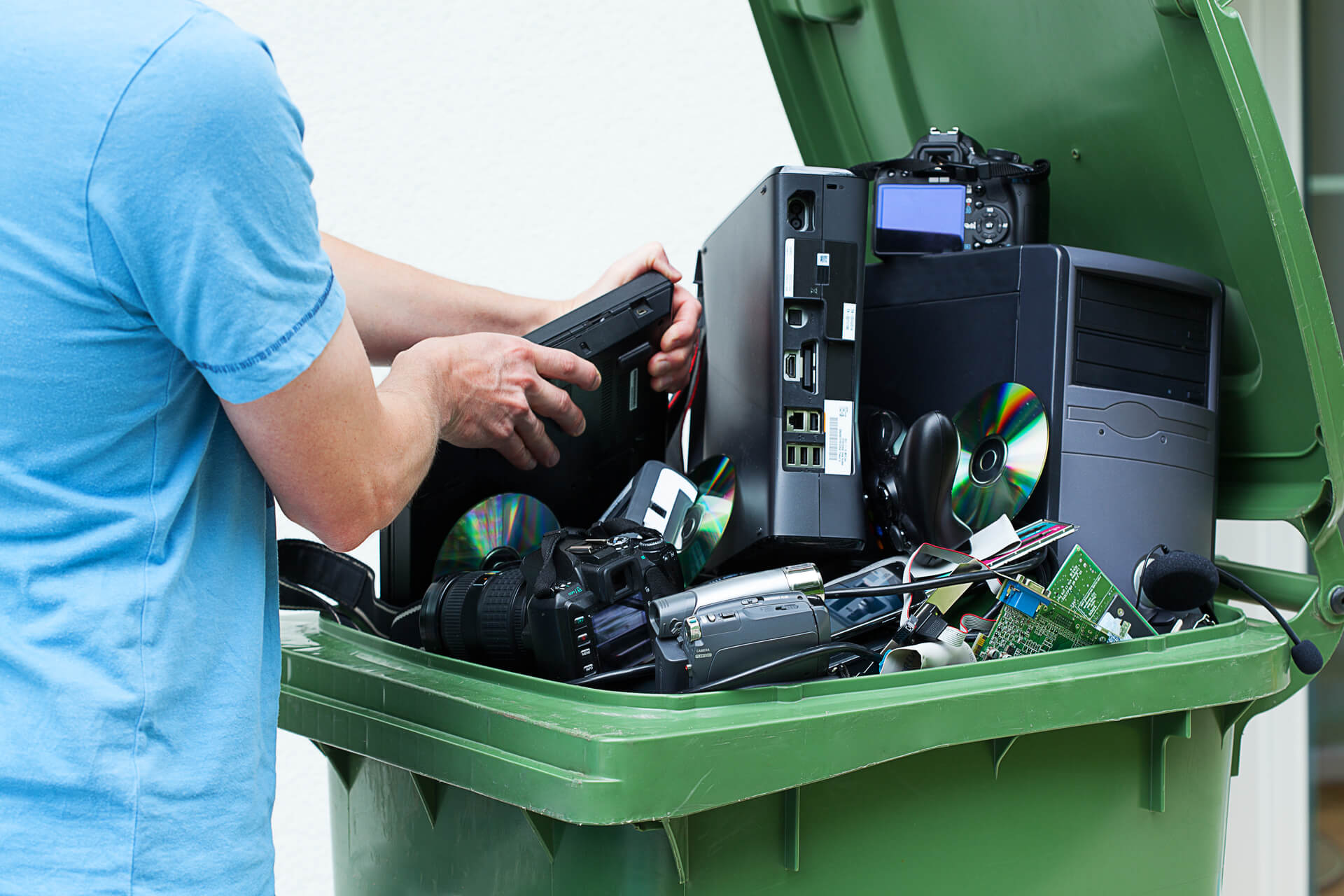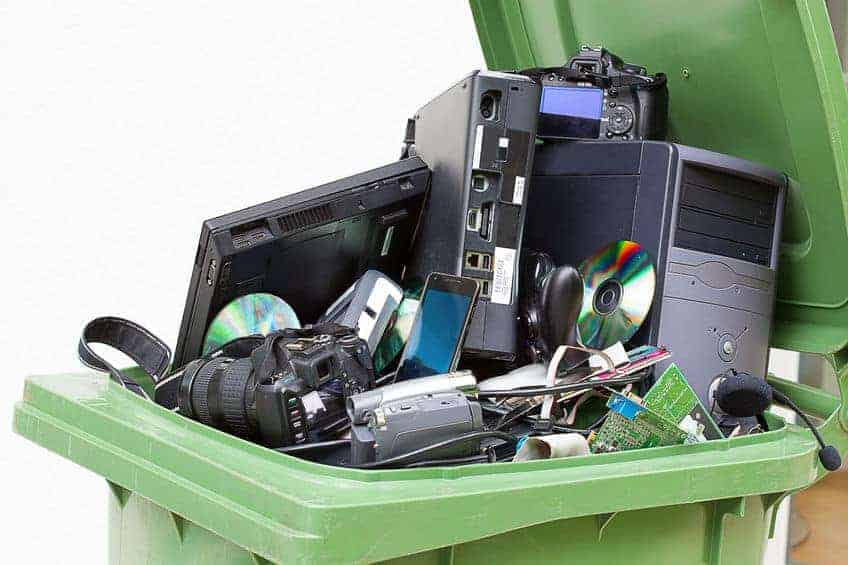Secure Your Ecological Dedication: Electronics Recycling with R2 Certification
Wiki Article
Elevate Your E-Waste Management With R2 Certification: a Comprehensive Review
One key technique to raise e-waste monitoring practices is by obtaining R2 qualification. By exploring the processes and benefits linked with R2 qualification, a deeper understanding of how it can reinvent e-waste monitoring strategies emerges, shedding light on a path towards sustainability and honest disposal methods.Relevance of E-Waste Monitoring

When e-waste is not managed appropriately, these toxic compounds can permeate into the environment, causing damage to wild animals and potentially going into the food web, positioning dangers to human wellness. The improper disposal of e-waste contributes to contamination and greenhouse gas exhausts, exacerbating climate modification and ecological destruction.

Advantages of R2 Accreditation

Firstly, R2 accreditation boosts trustworthiness by showcasing a company's devotion to sustainable methods. It ensures customers, partners, and stakeholders that the firm adheres to strict requirements for e-waste management - r2 certification. This trustworthiness can bring about enhanced depend on and boosted partnerships with customers that prioritize environmental obligation
Secondly, R2 accreditation assists minimize risks related to incorrect e-waste disposal. By adhering to the rigorous standards established forth by the accreditation, organizations can reduce the probability of information violations, ecological contamination, and lawful repercussions. This proactive method safeguards the business's reputation and reduces prospective obligations.
Finally, R2 accreditation demonstrates a commitment to environmental stewardship - r2 certification. By properly managing electronic waste through licensed procedures, companies add to the preservation of sources, reduction of contamination, and promotion of a circular economic climate. This dedication not just benefits the environment but also straightens with advancing customer assumptions for sustainable organization techniques
R2 Qualification Refine Introduction
Having established the advantages of R2 qualification in promoting reputation, threat reduction, and environmental stewardship, it is vital to now outline the thorough procedure included in obtaining this qualification. The R2 accreditation process starts with a detailed evaluation of the organization's functional policies and treatments to make sure compliance with the R2 criterion. This preliminary assessment is critical in determining any voids that need to be addressed prior to proceeding better.Once the company's methods align with the R2 typical demands, an independent third-party auditor performs an on-site audit to examine the implementation and performance of these practices. This audit consists of an extensive review of paperwork, interviews with personnel, and physical inspections of centers to verify conformity.
Following an effective audit, the company gets a certification choice based upon the auditor's searchings for. If accepted, the organization is provided R2 accreditation, showing its commitment to accountable e-waste monitoring. It is essential to keep in mind that maintaining R2 accreditation calls for recurring compliance with the requirement's needs and periodic audits to make sure ongoing adherence to finest techniques in e-waste recycling and disposal.
Key Requirements for R2 Conformity
An important element of attaining R2 conformity is ensuring that all electronic waste (e-waste) handling facilities meet stringent ecological and security standards. To follow R2 needs, companies must stick to crucial criteria that concentrate on responsible e-waste administration techniques. These criteria include executing a documented environmental, health and wellness, and security administration system, making certain the safe and secure handling of data-containing tools, and performing comprehensive downstream due diligence to track the final destination of e-waste materials.Moreover, R2 compliance necessitates the correct screening, repair, and recycling of digital devices to prolong its helpful life and reduce environmental impact. Facilities looking for R2 qualification have to additionally prioritize worker health and safety by providing necessary training, individual safety devices, and a safe workplace. Furthermore, maintaining detailed documents of e-waste handling activities and routinely undertaking audits by accredited licensing additional hints bodies are crucial components of showing recurring compliance with R2 standards.
Influences of Sustainable E-Waste Practices
The execution of lasting e-waste practices according to R2 compliance not just makes certain environmental and safety requirements are met yet likewise significantly influences the overall lifecycle of digital products. By sticking to R2 standards, digital waste management procedures become extra effective, lowering the environmental impact of electronic items. Sustainable e-waste methods facilitate the appropriate disposal of digital components, making certain that dangerous products are handled properly and do not finish up polluting the atmosphere.Moreover, accepting lasting e-waste practices promotes the round economy by assisting in the recuperation and reuse of valuable materials from digital items. This not only saves priceless sources but likewise lowers the need for resources removal, lessening the ecological effect of electronic manufacturing. Furthermore, lasting e-waste methods can contribute to work development in the recycling and refurbishment sectors, cultivating economic development while advertising ecological obligation. Generally, the adoption of lasting e-waste go to these guys techniques under R2 qualification offers as an essential step in the direction of accomplishing an extra eco sustainable electronics market.
Verdict
Finally, carrying reference out appropriate e-waste administration practices is essential for environmental sustainability and resource preservation. R2 accreditation plays a crucial role in ensuring responsible handling and disposal of digital waste. By adhering to the stringent standards established forth by R2 standards, organizations can not just reduce their environmental influence however also add to an extra sustainable future for generations ahead.One key approach to raise e-waste management techniques is by obtaining R2 accreditation. By exploring the procedures and benefits linked with R2 accreditation, a deeper understanding of just how it can transform e-waste monitoring approaches arises, dropping light on a course towards sustainability and moral disposal methods.
The R2 certification procedure begins with a detailed evaluation of the company's operational plans and procedures to make sure compliance with the R2 standard. If accepted, the organization is approved R2 certification, demonstrating its dedication to responsible e-waste administration. Overall, the adoption of lasting e-waste methods under R2 qualification serves as a critical step in the direction of attaining a more ecologically lasting electronics market.
Report this wiki page